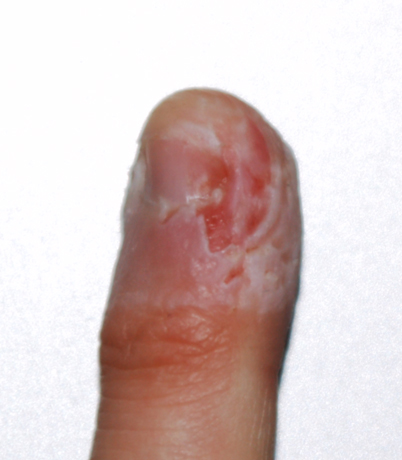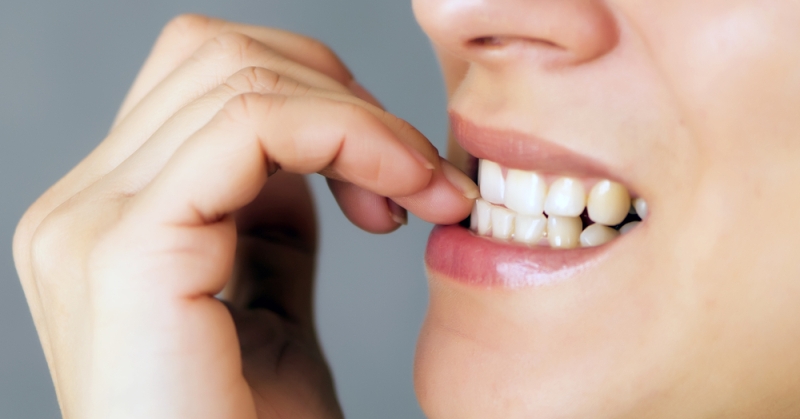You know when that little bit of skin next to your fingernail snags on your jacket, and you don’t have clippers handy to snip it off? It can be just as easy to use your teeth to solve the problem. Well, for some people that little nibble turns into something more obsessive. They take nibbles even when there isn’t a bit of skin to bite or pinch or pluck. That obsessive behavior has a name: dermatophagia.
If you’re a nervous person like me, you’ve probably developed quite a few little habits that you engage in to soothe yourself. There are several that seem to come naturally, from nail and lip biting to pacing. My anxiety crutch of choice has always been teeth grinding.
But then there’s dermatophagia.
While grinding your teeth and biting your lips certainly aren’t healthy for you, dermatophagia takes things to a whole different level of harmful. The phrase literally means “eating skin,” and it occurs in 2 out of 7 people, resulting in chewing and picking at skin, usually around the nails. (1)
The results can be pretty horrific.

What Causes Dermatophagia?
Research has linked dermatophagia behavior to impulse control and obsessive-compulsive disorders. Psychologists may even associate dermatophagia as a symptom of such disorders. (2)
The habit of dermatophagia can turn into a vicious cycle, causing shame and guilt in sufferers which can in turn lead to increased anxiety and therefore an increased ‘need’ to engage in the temporarily soothing behavior.
What Are The Risks?

Well, for one, a dermatophagia sufferer’s finger could wind up looking like that if the behavior is extreme. And it’s not just the disfigurement and resulting pain/shame that poses a threat. Such breaking of the skin also makes one prone to infections. (3)
If you’re “lucky” your skin will develop callouses as an attempt to protect itself. (4)
So How Do You Stop?
Dermatophagia falls under the umbrella of body-focused repetitive behavior and the good news is that there has been much study dedicated to the action, which has resulted in a few widely helpful treatment options being discovered.
Behavior modification therapy is one such treatment option. It involves making use of positive and negative reinforcement to tackle the root of the issue – obsessive compulsive disorder. (5)
Positive reinforcement involves offering rewards for behavioral changes. Commonly, a therapist and client will draw up a contract outlining terms of the reward system.
Negative reinforcement, on the other hand, is the exact opposite. Punishment is given if changes are not made. And it’s important to work with a professional on this, as it might be easy to beat yourself up unnecessarily for your behavior. Remember, this is caused by a mental disorder; it’s not your fault.
Habit reversal training is another form of therapy that has been used successfully to treat dermatophagia and the OCD behind it. (6)
Unfortunately, compulsive behaviors is incredibly easy to get caught up in. A person can easily do them without even thinking about it. But the goal of habit reversal training is to pinpoint your triggers and know exactly when you are carrying out the compulsive behavior.
Once you can identify the triggers, make yourself conscious of the fact that you’re engaging in the behavior. Then habit reversal training pushes you to replace the bad habit with something less harmful. For example, you might choose to squeeze a stress ball to keep your hands busy and away from your mouth.
You Are Not Alone
As with just about every other mental illness out there, while you might suffer in your own unique way, you are most definitely not alone on your journey to becoming healthier and happier.
I hope this video of one woman’s story will shed some light on the journey.
Could your nail biting be a sign of frustration instead? Check out this article to find out!
[h/t: www.sun-gazing.com]


